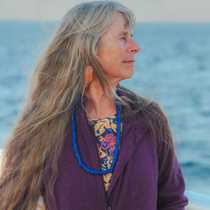Bahia Magdalena, Sand Dollar Beach & Hull Canal
Sunrise found the National Geographic Sea Bird at anchor near Sand Dollar beach off of Isla Magdalena. Heavy dew covered everything! Our ship, the nearby sand dunes, all surfaces were covered with a layer of mist brought by the cool night air of the Pacific Ocean. After breakfast we adjourned to the forward lounge for several ship’s briefings and introductions to the National History Staff. Once these formalities were complete our expedition leader invited us to come ashore for hikes across a thin sliver of sand dunes that separated Bahia Magdalena and the Pacific Ocean. This unusual bay is protected by two barrier islands creating a large extremely calm body of water, which in turn provides a very important habitat for many species. Our morning hikes would be concentrating on several land inhabitants. The botanical community of the sand dune environment, and a myriad of tracks that revealed the story of quite an assortment of creatures moving along many highways that laced through the dunes. Our natural history staff brought these animals to life while they wove a story of a world rich in diversity.
A close inspection of a small hummock of sand verbena required many of us to crouch down within inches of the sand and revealed the delicate toenail prints of the white-footed mouse. These extremely small large-eared mice make their homes in the protected hummocks of plants that peppered the sand dune environment. Along with the tiny white footed mouse we found the tracks of Coyote, hares, larger rodents, lizards, crabs and insects all making a living on the rich vegetation of the Baja winter! The winter rains had been plentiful, and with that moisture brought such a visual feast around each sand dune in displays of flowering plants which were also food to smaller animals. Cresting the last hill of sand dunes we could hear the sound of the surf bringing all our groups onto the beach at Bahia Santa Maria, facing the Pacific Ocean. Exploring what had been beached during the high tide of the last new moon each group made their way ever so slightly north and then returned back across the sand dunes to Bahia Magdalena, traveled back to the waiting National Geographic Sea Bird by Zodiacs. Lunch was served, and slowly the anchor was brought up and our ship headed towards Hull Canal, a very narrow passage leading into the northern section of Bahia Magdalena to a smaller bay called the Boca de Soledad. The afternoon in Hull Canal took the National Geographic Sea Bird through a narrow Mangrove lined channel where many bird species spend the winter months. In the late afternoon we approached the Boca, the mangroves grave way to the northern end of Isla Magdalena a narrow point of land covered once again in sand dunes.
“Shadows mold the dunes, giving them shape and substance, boldly outlining the crests and casting the hollows into shade. It is a hidden world; with an expanse of freshly rippled sand or a line of disintegrating animal tracks, a spray of brilliant pink sand verbena or a beetle trundling on tiptoe across the sand.
Climb to the highest ridge in a dune field and muse on the hills and hollows below. Watch the rising and falling waves of sand and remember that for everything there is a season, and for life on the sand dunes it is the season of the wind.”
- Seasons of the Wind, by Janice E. Bowers
As the northern point of Isla Magdalena came into view, we saw our first gray whale blows. Several cow-calf pairs passed the National Geographic Sea Bird with a small baby gray whale leaping out of the water….could this be a preview of tomorrow? Soon we would find out; until then we waited with anticipation watching the light move to sunset at the end of yet another beautiful day in Baja, California Sur.



